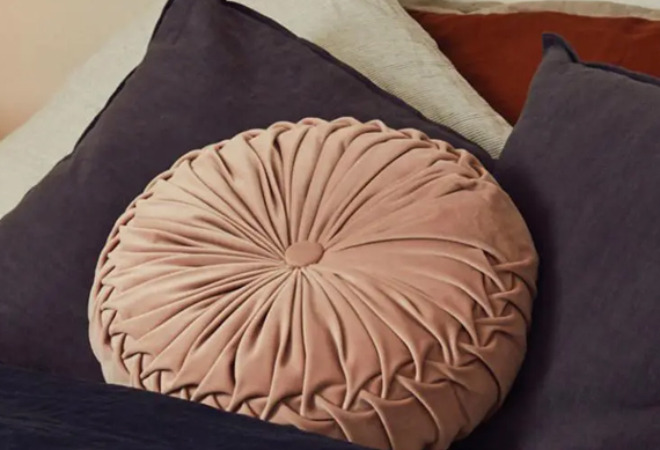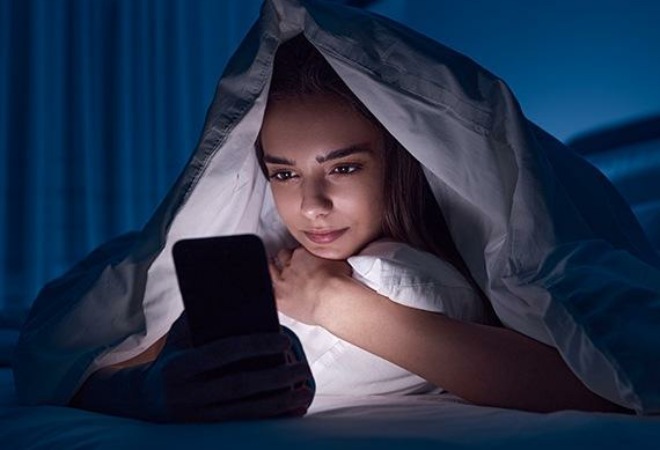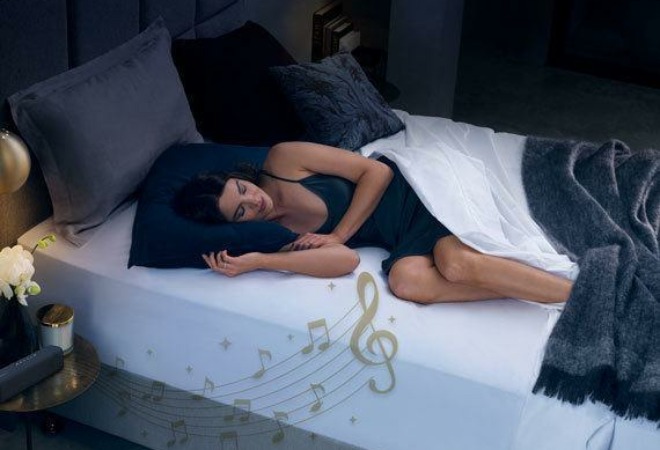Sound can be described not only with words but also with colours, since both travel in waves. Low-pitched sounds often match warm colours, while high-pitched ones align with cool tones—like how “white noise” blends all frequencies. Explore the different coloured sounds and their effect on sleep.
Coloured sound
The different coloured sounds and their effect on sleep
If you had to describe a noise, what words would you use? Mellow, rhythmic, booming, piercing. What about using a colour to describe a sound? But a sound is something you hear, so how can it be described as something you see? Both sound and light travel in waves or frequencies if you think of a sound wave frequency corresponding to a particular light wave frequency, we can attribute a colour to it. Low frequencies or deeper sounds are assigned to warm colours like pink and brown, while high frequencies or high-pitched sounds are assigned to colours like blue and violet. Chances are that you may have heard the term ‘white noise’?
Coloured sound
What is white noise?
White noise is when all sound frequencies are present at the same pitch, just like static or the hiss of an old TV or a radio station when it hasn’t been tuned properly. White noise for sleep has often been used by people struggling with their sleep as it masks (or drowns out) other distracting or annoying sounds, such as a partner snoring or a neighbour talking next door. However, pure white noise can be harsh to listen to. As it’s not a noise that is commonly heard in nature, it doesn’t have many soothing properties.
Coloured sound
What is pink noise?
What most people think of as white noise is actually more correctly termed pink noise. Pink noise still consists of all frequencies, but not all at the same pitch. The frequencies are usually lower which makes it sound deeper and more pleasant to the human ear. Rhythmic sounds such as steady rain, wind, leaves rustling or waves lapping on a beach are good examples of pink noise. Biological sounds such as a heartbeat or a neuron firing are also examples of pink noise. Pink noise is still a continuous sound like white noise, but because pink noise regularly occurs in nature, we match these sounds of life and the natural world. For example, rain noise for sleep or natural sounding background noise for sleep. This provides a more calm, pleasant environment to sleep to, still with the added advantage of masking out unwanted and unpredictable sounds that tend to rouse us from our sleep.
Coloured sound
What is brown (or red) noise?
Brown noise is similar to pink noise but has a lower tone, deeper sound, and is sometimes perceived to be quieter (or muted) than white or pink noise. Examples include the roar of a wave, thunder or underwater. Even the deep booming sounds made famous by the Dolby trailer played in cinemas!
Coloured sound
Is there any scientific evidence that white, pink or brown noise helps improve sleep?
Coloured sound
Using white, pink and brown noises as a sleep aide
Thanks to a multitude of apps and internet platforms, white, pink and brown noise are easy to find. And it’s all about your personal preference – if you like water, weather, electronic (fans, static, etc) sounds there are a multitude to choose from. There are also numerous devices to listen on – phones, computers, earphones, headbands, speakers or even speaker incorporated pillows.
Coloured sound
A couple of points to consider:
- Light sends highly alerting messages to the brain to be awake, so whatever device you are listening on, try to limit the light coming from screens, notifications and chargers
- Work out what you are using the sounds for. If you are wanting some noise to help you fall asleep but then find the noise wakes you through the night, then look for an app that has a turn off or dimming functionality after a certain period of time. Alternatively, if you are trying to mask more regular noises during the night (a partner snoring, emergency vehicle sirens, equipment noises) then find an app with extended playing time.
Reference:
1 Reidy SM, Smith MG, Rocha S, Basner M, (2021). Noise as a sleep aid: A systematic review. Sleep Medicine Reviews, 55. doi.org/10.1016/j.smrv.2020.101385.
2 Ebben MR, Yan P, Krieger AC, (2021). The effects of white noise on sleep and duration in individuals living in a high noise environment in New York City. Sleep Medicine, 83, 256–259. doi.org/10.1016/j.sleep.2021.03.031.
3 Cho ME & Hwang SK, (2021). The effect of white noise on sleep in hospitalized patients: A randomized controlled trial. Korean Society of Adult Nursing, 33(1), 44-55. doi.org/10.7475/kjan.2021.33.1.44
4 Umbas JCG, Bintang AK, Aulina S, Bahar A, Akbar M, (2021). The effect of white noise on high school students’ sleep quality at Unit B of Rajawali Girls Dormitory Makassar. Medicina Clínica Práctica, 4 (suppl. 1). doi.org/10.1016/j.mcpsp.2021.100209
5 Rosalez E, Johnson CM, Bradley-Johnson S, Kanouse S, (2019). Effects of white noise on off-task behavior and sleep for elementary-age students with ADHD. Child & Family Behavior Therapy, 42(1), 20-36, doi.org/10.1080/07317107.2019.16907 5
6 Papalambros NA, Santostasi G, Malkani RG, Braun R, Weintraub S, Paller KA, Zee PC, (2017). Acoustic Enhancement of Sleep Slow Oscillations and Concomitant Memory Improvement in Older Adults. Frontiers in Human Neuroscience, 11(109), doi.org/10.3389/fnhum.2017.00109
7 Schade MM, Mathew GM, Roberts DM, Gartenberg D, Buxton OM, (2020). Enhancing slow oscillations and increasing N3 sleep proportion with supervised, non-phase-locked pink noise and other non-standard auditory stimulation during NREM sleep. Nature and Science of Sleep, 12, 411–429. doi.org/10.2147/NSS.S243204 8 Zhou J, Liu D, Li X, Ma J, Zhang J, & Fang J, (2012). Pink noise: Effect on complexity synchronization of brain activity and sleep consolidation. Journal of Theoretical Biology, 306, 68–72. https://doi.org/10.1016/j.jtbi.2012.04.006




